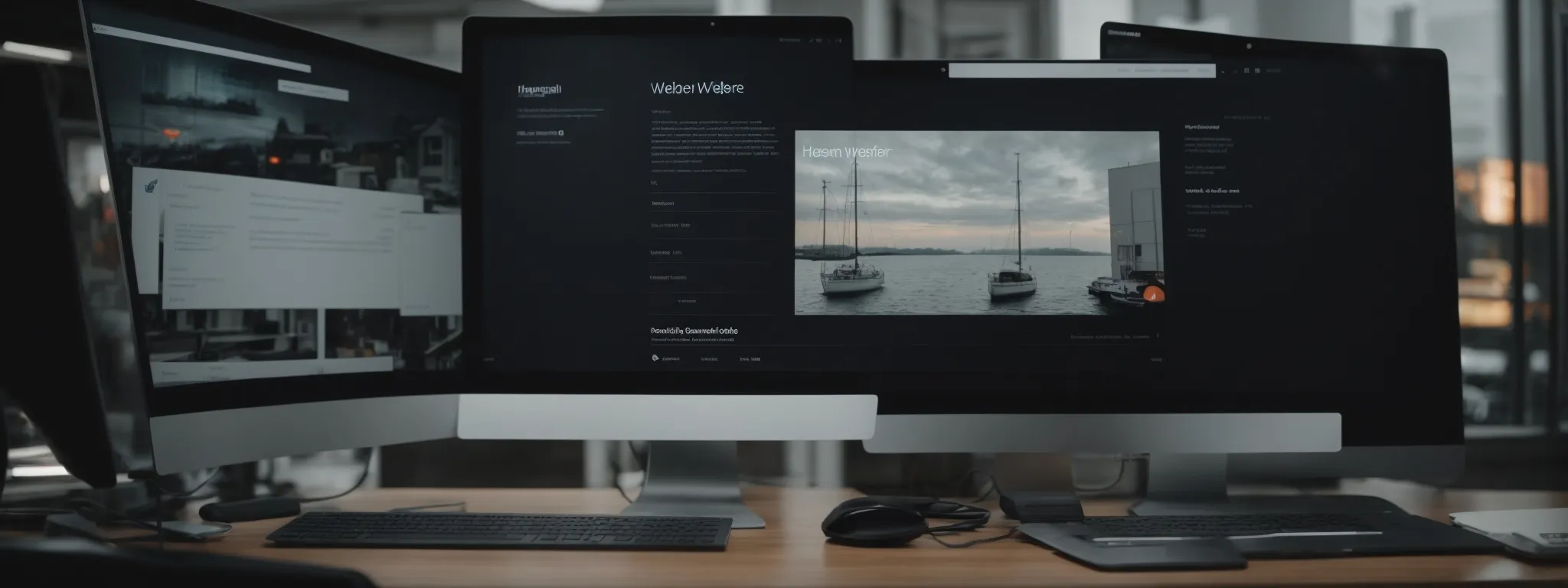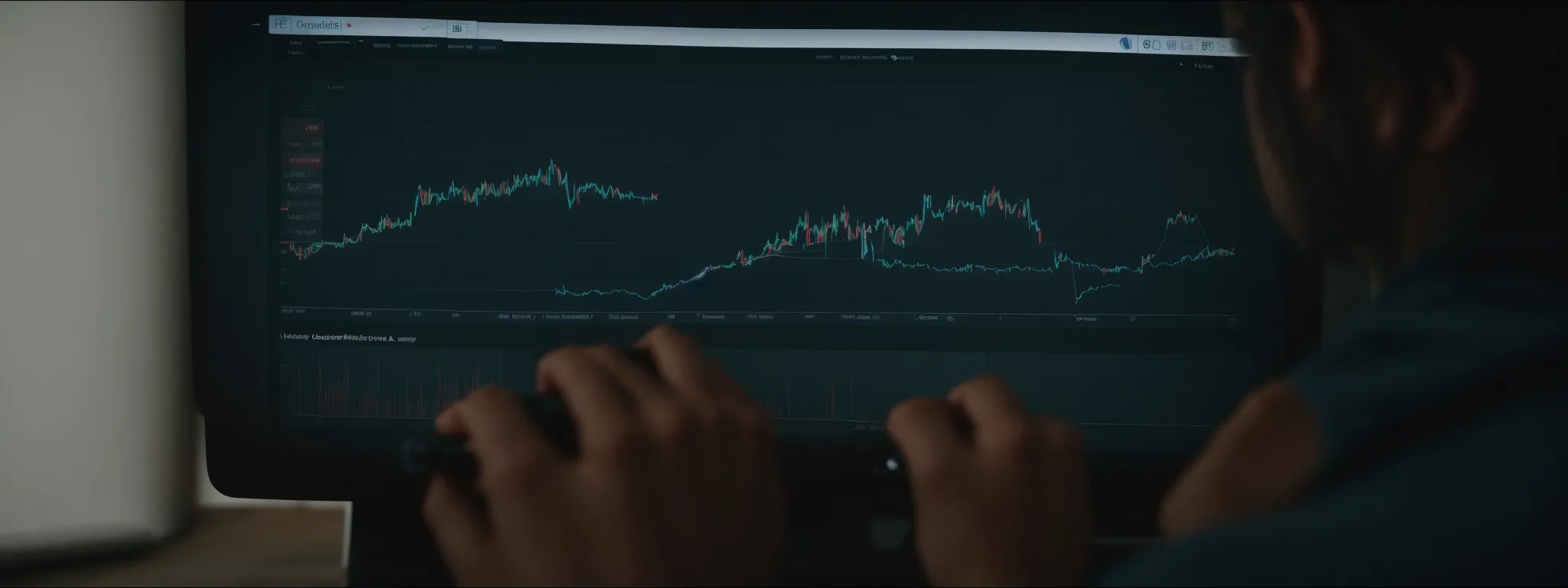Headless CMS SEO: Strategies for Success
Optimizing for Search Engines With Headless CMS: A Guide to SEO Success In an era where device agnosticism and omnichannel strategies reign, utilizing a headless CMS becomes […]
Optimizing for Search Engines With Headless CMS: A Guide to SEO Success
In an era where device agnosticism and omnichannel strategies reign, utilizing a headless CMS becomes pivotal for companies intent on amping up their SEO game.
This approach decouples the backend from the frontend rendering, and thus, experts argue that it offers unprecedented flexibility in content delivery and SEO metadata management.
As SEO specialists strive to master the intricacies of headless CMS SEO, it’s essential to comprehend how it contrasts with the SEO practices of traditional CMSes and enhances website performance.
With LinkGraph’s cutting-edge SEO services and SearchAtlas SEO tool at the helm, businesses are equipped to navigate this transition smoothly and scale the SERP strategically.
Keep reading to explore the roadmap laid out by LinkGraph’s services toward achieving a zenith in search engine optimization through the tactical deployment of headless CMS.
Key Takeaways
- Headless CMS Offers Flexible Architecture That Enhances SEO by Allowing Control Over Content Delivery Across Various Channels
- Strategic Control of SEO Elements Like URL Structure and Metadata Is More Efficient in Headless CMS Platforms
- APIs in Headless CMS Play a Crucial Role in Content Distribution and Search Ranking Improvement
- For Effective SEO, Headless CMS Demands Careful Management of XML Sitemaps and URL Optimization
- LinkGraph’s SEO Services and SearchAtlas Tool Help Navigate Omnichannel SEO Challenges Using Headless CMS Technologies
Understanding Headless CMS and Its Impact on SEO

As the digital landscape evolves, the fusion of content management and search engine optimization (SEO) strategies grows increasingly intertwined.
Enter the headless content management system (CMS), a dynamic approach that separates content creation from presentation, carving a niche for itself in the competitive realm of online visibility.
By shedding the constraints of a traditional CMS, a headless CMS offers a flexible architecture that could potentially revolutionize SEO practices, bringing unprecedented control over web content and enhancing website performance.
This discussion unveils the core principles of headless CMS and delves into its profound influence on SEO, setting the stage for brands to leverage headless technology for an edge in search engine rankings.
Exploring the Basics of a Headless Content Management System
At its essence, a headless content management system operates by decoupling the backend—the content repository from which authors and content managers execute access controls and content creation—from the frontend, the presentation layer where that content is eventually displayed. A stark contrast to traditional CMS platforms, a headless CMS architecture facilitates content delivery across various devices and channels, maintaining a central repository that serves a plethora of endpoints through Application Programming Interfaces (APIs).
Such separation enables organizations to employ frontend frameworks most suitable for their specific SEO challenges without compromising the integrity of the content model. By capitalizing on the nimbleness of headless CMSes, businesses can ensure that their web applications are not only optimized for search engine algorithms but also conceived with the adaptability to enhance user experiences on every conceivable platform and device.
How Headless CMS Architecture Influences SEO
The strategic application of headless CMS architecture significantly bolsters SEO efforts by enabling unparalleled control over SEO elements, such as metadata, schema markup, and URL structures. By stripping away the rigid presentation constraints of conventional CMS platforms, headless technology allows SEO specialists to implement technical SEO best practices more efficiently across various landing pages and web applications.
SEO gains momentum when there’s a marked improvement in website performance and user experience, two areas where headless CMS shines. This innovative system bolsters web vitals by streamlining content delivery and rendering, directly influencing search engine rankings by catering to the metrics search engines prioritize when determining SERP standings.
The Key Differences Between Headless CMS SEO and Traditional SEO

The digital era ushers in sophisticated methodologies in website optimization, where Headless Content Management Systems (CMS) emerge as a pivotal player in propelling SEO success.
Distinct from the conventional approach, headless CMS pivots on improving content delivery mechanisms and integrating robust APIs—a critical aspect that offers transformative potential for SEO.
This subsection explores the intricate relationship between content delivery and search engine rankings, unraveling the nuances of APIs as a foundational component of headless CMS that strategically elevates an organization’s SEO landscape.
Analyzing How Content Delivery Affects Search Rankings
When it comes to Headless CMS and its SEO potential, the swiftness and precision of content delivery emerge as catalysts for high search rankings. Unlike traditional CMSes, headless architectures employ Content Delivery Networks (CDNs) and APIs for the rapid dissemination of content which, in turn, can bolster a website’s presence in search engine result pages by meeting the speed and agility demands of modern search algorithms.
Headless CMS by design prioritizes efficient content distribution to the point of contact with the user, whether that be a web page, app, or IoT device. This focus on performance not only elevates the user experience but also aligns with search engines’ preference for content that can be served seamlessly anywhere and on any device, thus impacting search rankings positively.
The Role of APIs in SEO for Headless CMS
In the ambit of headless CMS, APIs represent the vascular system that transports SEO-rich blood. They grant SEO specialists the flexibility to manage and disseminate content across an expanse of platforms, optimizing for an omnichannel approach that reaches consumers everywhere, thereby elevating the SEO performance of the website platform.
This granular control extends to managing URL slugs, metadata, and sitemap contributions, all of which are pivotal for a boosted SEO strategy. The RESTful nature of these APIs ensures content updates are instantaneous and synchronized, giving SEO efforts an edge in the fast-paced digital ecosystem:
| SEO Element | Impact With Headless CMS API | Traditional CMS Limitation |
|---|---|---|
| URL Structure | Dynamic, customizable per platform | Static, less adaptive |
| Metadata Management | Centralized, consistent across channels | Disjointed, often platform-specific |
| XML Sitemap Updates | Automated, real-time updates | Manual, time-consuming updates |
Structuring Content for SEO in a Headless CMS Environment

In a headless CMS environment, crafting an SEO strategy that resonates with your target audience and search engines alike hinges upon meticulous content structuring.
With the backend and frontend decoupled, it’s imperative for brands to design content models that are inherently SEO-friendly and to wield URL management practices that bolster search engine visibility.
The following segments outline strategic approaches to modeling content and URLs that align with headless architectures, setting the foundation for enhanced SEO efficacy and aiding brands in their quest for search engine dominance.
Designing Content Models With SEO in Mind
Within the innovative realm of headless CMS, the crux of SEO is to forge content models that innately support search optimization. This entails configuring the content type, entries, and fields in a way that they inherently comply with SEO best practices, ensuring an SEO-compatible structure that enhances visibility and readability by search engines.
Adept content creators using a headless platform meticulously align content type definitions with SEO metadata requirements, forging a seamless bond between content and the requisite SEO elements such as meta tags and schema markup. Such deliberate schema allows for the proficient infusion of SEO signals within the content, paving the way for content that is as discoverable as it is powerful.
Implementing Effective URL Management Strategies
In navigating the terrain of headless CMS SEO, the agility of URL management comes to the forefront as a significant driver of search engine optimization. Companies must adopt a proactive strategy in crafting and maintaining URL structures that are both coherent and optimized for search engines, ensuring a consistent and discoverable online presence.
Optimizing for search engines within the headless CMS framework entails a meticulous approach to URL slug creation that reflects the content’s essence and relevancy. The goal is to produce easily readable and keyword-rich URLs, a task that developers and SEO specialists must coordinate to result in improved search engine rankings and a smoother user journey.
Enhancing on-Page SEO With a Headless CMS Approach

Transitioning into the realm of headless CMS illuminates a path for SEO specialists to refine on-page SEO factors with precision.
As the industry steers away from dependent traditional CMS plugins, it emboldens professionals to master the art of meta tag optimization and schema markup enhancement directly within the content management system.
This approach not only aligns with the latest SEO best practices but also ensures the brand’s content stands out in the crowded digital marketplace.
With these tools, companies are able to elevate their visibility and define their presence effectively in the search engine landscape.
Optimizing Meta Tags Without Conventional CMS Plugins
Embracing a headless CMS architecture equips SEO specialists with the capacity to hone meta tags with greater specificity and direct access to the content management layers. SEO teams can effectively tailor these critical SEO elements to each content piece, ensuring that meta titles and descriptions are optimized for relevant keywords and user engagement without reliance on SEO plugins that often accompany traditional CMS setups.
The elevated level of control over meta tags in a headless environment not only facilitates a sharper focus on SEO strategies but also responds to the evolving needs of a business’s online presence. SEO experts can leverage the agility offered by headless CMSes to continuously adjust and refine meta tags, responding swiftly to changes in search engine algorithms and consumer search behaviors.
Leveraging the Power of Schema Markup for Better Visibility
In the competitive arena of search engine optimization, schema markup stands out as an indispensable asset for maximizing visibility. The strategic implementation of schema within a headless CMS empowers content managers to provide search engines with detailed context, helping to distinguish and elevate web pages in the search result landscape.
By harnessing the specialized capabilities of schema markup, organizations adeptly highlight the most pertinent information, aiding search engines in comprehending the nuances of page content and thereby improving the brand’s prominence in search engine result pages. This approach is crucial in guiding a visitor towards the intended brand message and enhancing the overall user experience.

In the pursuit of SEO excellence, mastering the intricacies of technical SEO within a headless CMS is indispensable for organizations seeking to amplify their visibility in search engine result pages.
Central to this mastery are the strategies that enhance a website’s crawlability and indexation—an arena where headless architectures pose unique challenges and opportunities.
As entities shift towards serverless frameworks and decoupled infrastructures, configuring foundational SEO components like XML sitemaps demands innovative tactics.
This exploration provides a blueprint for companies dedicated to optimizing their digital content in an environment that prioritizes agility, scalability, and seamless integration with search engine processes.
Ensuring Efficient Crawlability and Indexation
Central to any SEO strategy is the assurance that search engines can efficiently crawl and index website content, a task requiring meticulous attention within a headless CMS platform. Technical SEO experts recognize that without proper indexing, even the most robust content can languish unseen, rendering SEO efforts fruitless.
In headless CMS architectures, streamlined sitemap generation and submission processes become paramount to success. SEO teams must proactively manage XML sitemaps to help search engines navigate and catalog content with agility, directly impacting the visibility of the company’s digital assets.
| Technical SEO Aspect | Significance in Headless CMS | Action Required |
|---|---|---|
| XML Sitemap Management | Foundational for search engines to discover and index content | Meticulous configuration and regular updates |
| URL Structure Optimization | Influences crawlability and user experience | Adopt coherent, keyword-centric URL schemes |
Configuring XML Sitemaps in a Serverless Architecture
In the intricate web of serverless architecture, the configuration of XML sitemaps becomes a vital puzzle piece for seamless search engine interaction. Headless CMS platforms must incorporate sitemaps that can be dynamically generated and updated, reflecting the site’s current structure for accurate search engine crawling and indexing.
Technical SEO teams are tasked with establishing automated systems within the headless CMS environment to ensure sitemaps remain current and informative. Consistent updates signal to search engines the presence of fresh, relevant content, enhancing the opportunity for higher ranking and visibility:
| Serverless Architecture Component | Impact on XML Sitemaps | Operational Benefit |
|---|---|---|
| Dynamic Sitemap Generation | Ensures current, adaptable sitemap structure | Fosters enhanced crawlability and indexation |
| Automated Sitemap Updates | Provides real-time content data to search engines | Elevates content discoverability and SEO ranking |
The strategic implementation of these sitemap features within a headless CMS not only aligns with SEO best practices but also adapts to the evolving nature of digital content, securing a competitive advantage in search engine optimization.
Exploring the Multichannel Capabilities of Headless CMS for SEO

In the fast-paced digital age where content consumption spans a multitude of platforms, optimizing for omnichannel delivery is imperative for SEO success.
Headless CMS offers a strategic advantage in this realm, providing the robust framework necessary to meet the varied requirements of content distribution and discovery across diverse channels.
This approach is not without its complexities, as SEO challenges must be deftly navigated to ensure consistency and visibility regardless of the consumer’s touchpoint.
The following insights spotlight the pivotal role headless CMS plays in both optimizing content for an omnichannel approach and overcoming the inherent SEO hurdles presented by such comprehensive strategies.
Optimizing Content for Omnichannel Delivery
In the arena of SEO, where adaptability is key, headless CMS systems manifest as game-changers for omnichannel delivery, ensuring that content resonates with consistency and high-quality across all platforms and devices. By using a headless CMS platform, organizations equip their content team with the power to tailor and disperse content that is inherently optimized for each unique channel, fostering a unified brand experience that is crucial for both user satisfaction and SEO efficacy.
Through the strategic structuring of content types and leveraging of APIs provided by headless CMSes, SEO specialists enable a seamless content flow to various consumer touchpoints, from ecommerce sites to voice search interfaces. This approach grants unparalleled flexibility and ensures that a brand’s message is not only accessible but also optimized to capture the very essence of what search engines and consumers seek, no matter the point of access.
Addressing the SEO Challenges of Omnichannel Strategies
In confronting the SEO challenges inherent to omnichannel strategies, LinkGraph’s SEO services adeptly navigate the necessities of content uniformity and SEO efficacy across a spectrum of digital environments. The organization focuses on ensuring the precise alignment of content across various channels, thus upholding the integrity of its clients’ brand messaging and optimizing for search visibility, all facilitated by the flexibility of headless CMS platforms.
LinkGraph’s SearchAtlas SEO tool specializes in identifying and rectifying disparate SEO elements that might otherwise dilute a company’s search engine presence when operating in an omnichannel context. The tool equips SEO specialists with deep insights and analytics, supporting the deployment of consistent meta tags, keyword strategies, and URL frameworks, vital for maintaining a cohesive and potent SEO stance in a landscape brimming with diverse touchpoints.
Best Practices for Link Building Using Headless CMS

The pursuit of SEO success in the ever-evolving digital marketplace calls for a robust blueprint for obtaining and managing backlinks, especially when operating within the versatile framework of a headless CMS.
This section will illuminate the strategic methodologies for accruing high-quality backlinks, a foundational pillar of SEO, as well as present the mechanisms for overseeing and sustaining a healthful link profile.
As we navigate the complexities of link building, it becomes clear that a headless CMS can serve as a potent ally in amplifying your search engine optimization efforts.
Strategies for Earning High-Quality Backlinks
Securing high-quality backlinks remains a cornerstone of effective SEO, and headless CMS serves as an advantageous platform for this endeavor. Optimized content management systems enable SEO teams to craft captivating content that naturally attracts authoritative backlinks, elevating a brand’s authority and search engine rankings.
LinkGraph’s meticulous approach to backlink acquisition centers on producing share-worthy content and fostering strategic partnerships. By understanding the intricacies of topical relevance and domain authority, LinkGraph identifies and engages with reputable industry players to build a robust backlink profile:
- Developing comprehensive content that addresses the pain points of an industry encourages reputable sites to link as a resource.
- Outreaching for guest posting opportunities on esteemed platforms establishes thought leadership while accruing valuable backlinks.
- Participating in community discussions and providing helpful insights can lead to organic link growth from industry-related forums.
Monitoring and Maintaining a Healthy Link Profile
In the domain of SEO where the backlink landscape is ever-shifting, vigilant monitoring of a link profile is critical. A key service offered by LinkGraph is the ongoing analysis of an organization’s external links, scrutinizing for quality and pertinence to prevent the dilution of SEO efforts and preserve search engine trust. Maintaining this level of oversight is paramount in headless CMS environments, where the swift adaptation of content across various channels can dynamically influence the link ecosystem.
LinkGraph understands the necessity of a healthy backlink portfolio in reinforcing the SEO framework facilitated by a headless CMS. The SEO specialists at LinkGraph diligently track backlink performance and anchor text distribution, ensuring optimal link health and relevance, thereby bolstering the client’s authoritative stance and enhancing their overall SEO footprint within the competitive digital marketplace.
Measuring and Analyzing SEO Success With Headless CMS

Establishing footholds within the digital expanse necessitates a keen analysis of SEO performance, an endeavor made comprehensive through the utilization of headless CMS systems.
For businesses, it’s imperative not only to set up robust analytics within these flexible frameworks but also to decode the insights rendered by SEO metrics and Key Performance Indicators (KPIs).
This analysis becomes the compass guiding brands towards informed strategies and perpetual optimization, facilitating a relentless pursuit of SEO eminence.
Setting Up Analytics in a Headless CMS Framework
In a headless CMS framework, the capability to embed sophisticated analytics becomes a primary concern for companies aiming to distill accurate SEO insights. Establishing a robust tracking system, capable of capturing user behaviors and interactions across all digital touchpoints, allows organizations to quantify the impact of their headless CMS on SEO performance and user engagement.
Tracking actions and conversions in a headless architecture requires a cohesive strategy that integrates seamlessly with the various APIs serving content. Professionals tasked with SEO optimization in headless environments prioritize the implementation of analytics solutions that provide real-time data, ensuring that the insights gleaned are up-to-date and reflective of the current content strategy’s effectiveness.
Interpreting SEO Metrics and KPIs for Continuous Improvement
Interpreting SEO metrics and KPIs within the dynamic realm of headless CMS platforms is pivotal for detecting undercurrents in SEO success. Specialists at LinkGraph employ advanced tools to scrutinize engagement rates, conversion figures, and organic search results, distilling actionable insights to propel the iterative refinement of SEO strategies.
SEO teams leverage these KPIs to hone in on user interaction patterns, adapt content strategies to meet emerging trends, and ensure alignment with SEO goals. LinkGraph’s dedicated approach enables consistent optimization, driving brands toward sustained improvement in search engine rankings and digital presence.
Conclusion
In conclusion, optimizing for search engines with a headless CMS is crucial for modern SEO success due to its flexibility and agility.
A headless CMS architecture allows for greater control over SEO elements such as metadata, schema markup, and URL structures, which are vital for enhancing website performance and user experience—key factors in search rankings.
The ability to efficiently manage content delivery across multiple channels and devices ensures that a brand’s content remains consistent and optimized, regardless of how users access it.
With headless CMS, SEO specialists have the tools to earn high-quality backlinks, monitor link health, and analyze performance through robust analytics.
Employing a headless CMS empowers organizations to overcome the complexities of technical SEO, navigate omnichannel challenges, and maintain competitive edge in the fast-paced digital marketplace.














































































